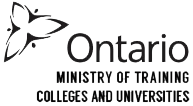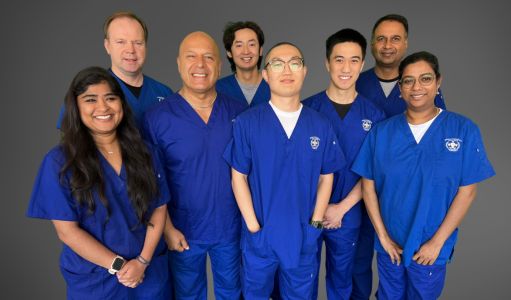Registration
Royal Canadian College of Massage Therapy is Registered as a Career College under the Ontario Career Colleges Act, 2005.

 PLEASE NOTE:
PLEASE NOTE:Please contact our Admissions Department to reserve your spot.
Admissions Contact: 416-447-7687 (ext: 223) or by emailing anna@rccmt.com
Our Massage Therapy Program is an 18 month program, based on the CMTO Inter-jurisdictional compentency involving class lectures and practical experience. We offer program start dates 3 times per year, for both day and evening classes.Winter session in January, Spring Session in May and Fall Session in September.
 During Term 1 and Term 2 emphasis is placed on learning basic knowledge of the Human Body. In Term 3 and Term 4 the focus will be on the application, knowledge, and the refinement of clinical skills.
During Term 1 and Term 2 emphasis is placed on learning basic knowledge of the Human Body. In Term 3 and Term 4 the focus will be on the application, knowledge, and the refinement of clinical skills.
Students will learn vital information that will help them excel in communication, professionalism, organization and time management skills that is required upon graduation. There will also be field trips to medical laboratories, cadaver laboratories, hospitals, office functions, rehab clinics and sporting events.
| Massage Therapy: Year 1 | ||
|---|---|---|
| 1 | Anatomy and Physiology I | |
| 2 | Pathology I | |
| 3 | Professional Development I | |
| 4 | Palpation Lab I | |
| 5 | Massage Theory and Techniques | |
| 6 | Clinical Assessment I | |
| 7 | Public Health | |
| 8 | Hydrotherapy I | |
| 9 | Therapeutic Exercise I | |
| 10 | Treatment Massage I | |
| 11 | Research I | |
| 12 | Massage Therapy Clinic I | |
| 13 | Outreach I | |
| Massage Therapy: Year 2 | ||
|---|---|---|
| 14 | Anatomy and Physiology II | |
| 15 | Pathology II | |
| 16 | Professional Development II | |
| 17 | Palpation Lab II | |
| 18 | Advanced Massage Theory and Techniques | |
| 19 | Clinical Assessment II | |
| 20 | Hydrotherapy II | |
| 21 | Kinesiology and Therapeutic Exercise II | |
| 22 | Communications | |
| 23 | Foundations of Wellness | |
| 24 | Business Management | |
| 25 | Massage Theory and Treatment Techniques II | |
| 26 | Research II | |
| 27 | Massage Theory Clinic II | |
| 28 | Outreach II | |
Anatomy 1 (Objectives):
Assessment 1 (Objectives):
Massage Theory and Techniques (Objectives):
Physiology 1 (Objectives):
Therapeutic Relations: Ethics and Professionalism (Objectives):
Anatomy 2 (Objectives):
Assessment 2 (Objectives):
Advanced Techniques (Objectives):
Physiology 2 (Objectives):
Professional Development: Business and Law (Objectives)
Neurology (Objectives):
Treatments 1 (Objectives):
Hydrotherapy (Objectives):
Pathology 1 (Objectives):
Microbiology (Objectives):
Nutrition (Objectives):
Treatments 2 (Objectives):
Pathology 2 (Objectives):
Endocrinology (Objectives):
Remedial Exercises (Objectives):
Clinical Science Review (Objectives):
Health Science Review (Objectives):
Professional Development Review (Objectives):
Term 1 and Term 2 emphasis is placed on learning basic knowledge of the Human Body. In Term 3 and Term 4 the focus will be on the application, knowledge, and the refinement of clinical skills.
Royal Canadian College of Massage Therapy is Registered as a Career College under the Ontario Career Colleges Act, 2005.

Please, enter a valid value

Please, enter a valid value